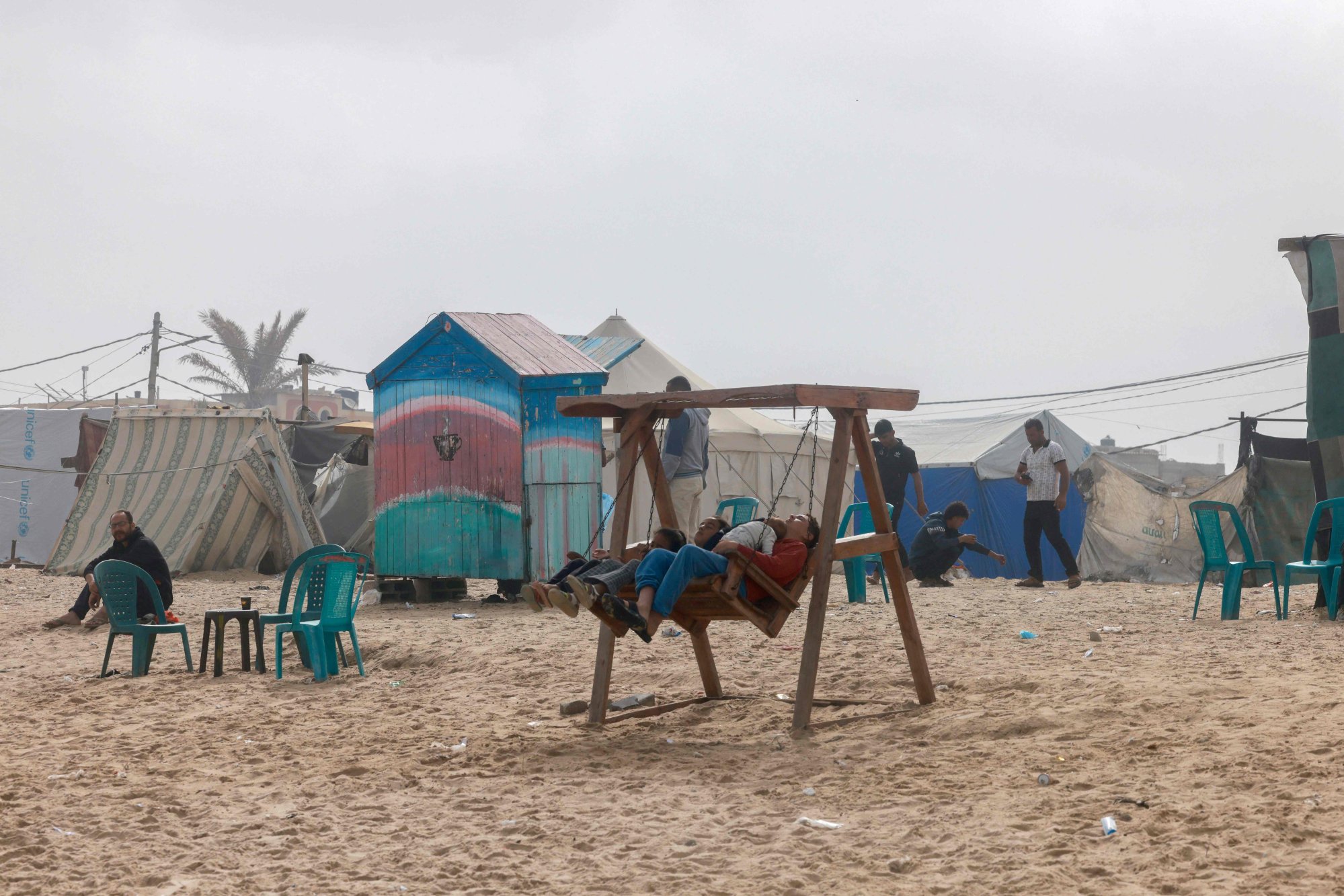
Israel-Gaza war: long, hot summer set to add to Palestinians’ suffering amid 39 degree heat: ‘It’s going to be very dangerous’
- The temperature in Rafah rose to 39.1 degrees Celsius on April 24, 14 degrees higher than the 30-year average for the same date
- People are living in makeshift shelters that intensify heat rather than protect people from it. The summer heat will also bring disease-transmitting mice
As the US tries to negotiate a cease fire between Israel and Hamas before another major attack on Gaza, a quieter, long-term threat has begun to worsen conditions for Palestinians already displaced by war.
The temperature in Rafah, the southernmost city in Gaza, rose to 39.1 degrees Celsius (102 degrees Fahrenheit) on April 24, 14 degrees higher than the 30-year average for the same date.
The temperature fell after two days and has remained seasonally normal. The problem is, the season is changing, and summer may bring temperatures much higher than the anomalous April heat spell.
“It is adding an extra layer of suffering on an already catastrophic humanitarian situation,” said Tommaso Della Longa, spokesperson for the International Federation of the Red Cross and Red Crescent Societies (IFRC). In refugees’ makeshift plastic tents, “it’s like living in a greenhouse”.

The April heat spike raised the spectre of what the IFRC calls the “invisible killer” of climate change. At least two children died from heat-related causes, Philippe Lazzarini, Commissioner General of the Palestinian relief agency UNRWA, said in a social media post.
An 18-year-old Palestinian woman, Lara Sayegh, also died in the heat wave while leaving Gaza. Just over 100 kilometres (63 miles) up the coast, Tel Aviv broke an 85-year-old April heat record, and dozens of people sought medical help.
More than 1 million people started moving to Rafah, which borders Egypt and the Sinai Desert, after fleeing their homes in the central and northern Gaza Strip in October.
Israel has fought a nearly seven-month war after a Hamas invasion that killed 1,200 and abducted 240. More than 34,000 Palestinians have been killed in Israel’s offensive, according to health officials in the Hamas-run enclave.
With summer now approaching, Palestinians and relief organisations are increasingly concerned about the added risk of heat exacerbated by climate change.
Khitam Al-Dadla, 40, has been living in a tent with her husband and six children for months. The April heat wave was “a prelude to what awaits us in the summer”, she said in an interview over the phone.
“There is no sewage network, and sewage flushed off the bathroom goes into a pit in the dirt.”
Al-Dadla said sewage oozes in the alleyways between the tents, emitting a “suffocating” smell and “attracting mosquitoes in the nights and flies in the day”.
Summer heat will also bring disease-transmitting mice, said Louise Wateridge, an UNRWA communications officer, in Rafah. She added diarrhea and Hepatitis A are both concerns.

“There’s nowhere to safely get rid of trash,” Wateridge said. “You’ve got people living under these sheets of plastic in this very unstable environment. It’s not going to improve at all.”
In a war zone, temperatures are usually a lesser concern, behind safety, food and shelter. But when they rise to extreme levels, they hit the vulnerable first.
Gaza’s heat the last week of April was “especially intense”, said Andrew Pershing, vice president for science at the research nonprofit Climate Central.
“The daily highs were important and certainly quite stressful and noteworthy,” he said. But “nighttime temperatures are where we see the strongest signals of climate change”.
One of the most dangerous impacts of global warming is that temperatures are rising faster at night than in the daytime, denying people the ability to cool off during heat waves.
Pershing oversaw the development of the Climate Shift Index, a tool that calculates and maps the influence of greenhouse gas emissions on temperatures around the world.
It suggests the daytime April heat was twice as likely in 2024 as it would have been before the Industrial Revolution. Greenhouse gas emissions made high nighttime temperatures in Gaza on April 24 and 25 five times more likely, Pershing said.
The Middle East is one of the more rapidly heating parts of the planet. An international team of scientists concluded in 2022 that the region’s temperatures are rising twice as fast as the global average.
In Rafah, people are living in makeshift shelters that make the heat worse rather than protect people from it, Wateridge said.
With very few tents available, people are living under handmade wood frames draped in plastic sheeting, sometimes obtained from bags of flour distributed by relief workers. Those retain heat at night, so it’s impossible to cool down.
The ordeal in Rafah is especially hard for women, Al-Dadla said, because “norms of our society” dictate that they spend most of the day inside their tents. “Men can take off some clothes, but we can’t. We have to keep our heads covered,” she added.
Refugees can get water from a desalination plant a significant walk away from the encampments, said Wateridge, and some people can pay for water delivered by donkey. But people have an average of less than a litre of water a day for drinking, washing and bathing.
The World Health Organisation standard for emergency conditions is 15 litres per person daily. Inadequate hydration can increase the risk of heat-related illnesses, adding another concern for those living in the camps.
The heat “has been a huge warning to everyone for what summer might bring,” Wateridge said. “It’s going to be very dangerous.”


